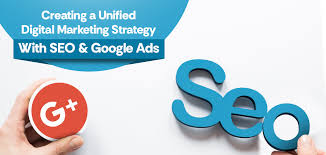In the world of digital marketing, businesses face the critical decision of how to drive traffic to their websites, generate leads, and increase sales. Two of the most popular and effective strategies are SEO advertising and Paid Ads (also known as Pay-Per-Click or PPC). Both approaches aim to increase visibility in search engines, but they differ significantly in their methods, costs, and long-term benefits. In this blog, we’ll break down the key differences between SEO and Paid Ads and help you decide which strategy is best for your business.
Understanding SEO Advertising and Paid Ads
To make an informed decision, it’s important to first understand what each strategy involves:
SEO Advertising:

SEO (Search Engine Optimization) advertising refers to the process of optimizing your website to appear higher in organic (non-paid) search results. It focuses on making your site more visible to search engines like Google through keyword optimization, quality content creation, user-friendly website design, link-building, and improving the site’s technical aspects (e.g., site speed, mobile-friendliness, etc.). SEO is an ongoing process that takes time to show results but can provide sustainable and cost-effective growth in the long run.
Paid Ads (PPC):

Paid Ads, or Pay-Per-Click (PPC) advertising, involves paying for your website to appear at the top of search engine results or across other platforms like social media. The most common paid advertising platform is Google Ads, where advertisers bid on specific keywords to appear above organic search results. You only pay when someone clicks on your ad. Paid ads allow businesses to achieve immediate visibility, target specific demographics, and scale campaigns quickly.
Both strategies are integral parts of media marketing and have their own advantages, but the decision of which one to choose largely depends on your business goals, timeline, and budget.
Advantages of SEO Advertising
1. Long-Term Cost-Effectiveness: One of the most appealing aspects of SEO advertising is its long-term value. While SEO requires significant time and resources upfront to create and optimize content, the results are long-lasting. Once your website starts ranking higher in search engine results, you’ll continue to receive organic traffic without ongoing payments. This makes SEO an excellent choice for businesses seeking sustainable growth without the constant need for ad spend.
2. Credibility and Trust: Users often trust organic search results more than paid ads. When your website ranks high on a search engine, it signals that your business is credible and authoritative in your industry. Organic listings typically receive more clicks than paid ads, as users often view them as more reliable. This trust can contribute to building brand loyalty and long-term customer relationships.
3. Long-Term ROI: SEO may take time to show results, but the return on investment can be substantial. Once you achieve high rankings, your business can benefit from a steady stream of traffic without paying for each click, making SEO an effective long-term strategy for maximizing ROI.
4. Compounding Benefits: SEO advertising has compounding benefits. The more effort you put into optimizing your site, the higher your chances of ranking better. Over time, SEO can continue to improve, leading to greater visibility and more organic traffic. Plus, your content continues to work for you long after it’s published.
Disadvantages of SEO Advertising
1. Time-Consuming: SEO is not an instant solution. It can take several months to see the full effects of your SEO advertising efforts. Ranking on the first page of Google requires consistent work, from keyword research to content creation and backlink building. This can be frustrating for businesses looking for immediate results.
2. High Competition: Depending on your industry, the competition for high-ranking keywords can be intense. It can be challenging to outrank well-established competitors in saturated markets. Additionally, ranking for certain high-value keywords may require considerable effort and investment.
3. Ongoing Effort: SEO is not a one-time activity. It requires continuous optimization and content updates to stay ahead of competitors and maintain rankings. For this reason, businesses need to commit to an ongoing SEO strategy, which may require dedicated personnel or external agencies.
Advantages of Paid Ads (PPC)
1. Immediate Results: One of the biggest benefits of paid ads is the speed at which you can see results. As soon as your PPC campaign goes live, your ads will appear in front of your target audience, driving traffic to your website. This is ideal for businesses looking for quick visibility or promoting time-sensitive offers.
2. Highly Targeted Campaigns: Paid ads allow for highly targeted campaigns. With platforms like Google Ads, businesses can target specific keywords, locations, demographics, interests, and even user behaviors. This level of precision ensures that your ads reach the right people at the right time, increasing the likelihood of conversions.
3. Scalability: Paid ads provide the flexibility to scale your campaigns up or down depending on your budget and objectives. You can quickly increase your ad spend to reach more people or narrow your targeting to focus on high-converting segments. This makes paid ads a versatile option for businesses of all sizes.
4. Measurable Results: Paid advertising offers clear, measurable results. With detailed analytics and tracking tools, you can monitor your campaigns in real time. Metrics like cost-per-click (CPC), click-through rate (CTR), and return on ad spend (ROAS) provide actionable insights to help you optimize your campaigns for better performance.
Disadvantages of Paid Ads (PPC)
1. Costs Can Add Up Quickly: Paid ads can become expensive, especially in competitive industries. Depending on your target keywords, you may find that bidding for ad space requires a substantial budget. Even if your ads are successful, you’ll need to continue funding the campaign to maintain visibility, making it a recurring cost.
2. Short-Term Impact: While PPC provides immediate results, it does not offer the long-term sustainability that SEO does. Once you stop funding your paid campaigns, your visibility vanishes. Paid ads require constant investment to keep the flow of traffic and leads coming.
3. Ad Fatigue: Over time, audiences may experience ad fatigue, where they become less responsive to the same advertisements. This can lead to lower engagement rates and higher costs per click, requiring businesses to refresh their ad creatives regularly to keep things engaging.
Which Strategy is Best for Your Business?
The best strategy for your business depends on several factors, including your goals, timeline, budget, and resources. Here’s a quick guide to help you decide:
-
Choose SEO Advertising if:
- You have a long-term vision and want to build sustainable, organic traffic.
- You want to establish brand authority and credibility in your industry.
- You have the time and resources to invest in ongoing optimization and content creation.
- Your market is less competitive, or you have the patience to outrank competitors over time.
-
Choose Paid Ads if:
- You need immediate traffic and visibility for a time-sensitive promotion.
- You have a clear target audience that can be reached through precise demographic targeting.
- You have a flexible budget and want the ability to scale quickly.
- You need measurable, real-time results to make quick decisions and adjustments.
Combining SEO Advertising and Paid Ads for Maximum Impact
While both SEO and Paid Ads have their strengths and weaknesses, many businesses choose to combine both strategies to get the best of both worlds. SEO advertising can help build long-term organic traffic, while Paid Ads can provide immediate visibility, especially for specific campaigns or time-sensitive offers.
For example, you can use paid ads to drive traffic in the short term while working on SEO to improve your organic rankings over time. Additionally, Paid Ads can complement your SEO efforts by targeting keywords that are difficult to rank for organically or by increasing visibility during competitive periods.
Conclusion
The decision between SEO advertising and Paid Ads depends on your specific business goals, timeline, and budget. SEO is a long-term, cost-effective strategy that builds trust and authority, while Paid Ads offer immediate visibility and precise targeting for quick results. For many businesses, combining both strategies as part of an overall media marketing plan can yield the best results. By understanding the strengths and weaknesses of each, you can make an informed decision and develop a strategy that aligns with your business objectives.

